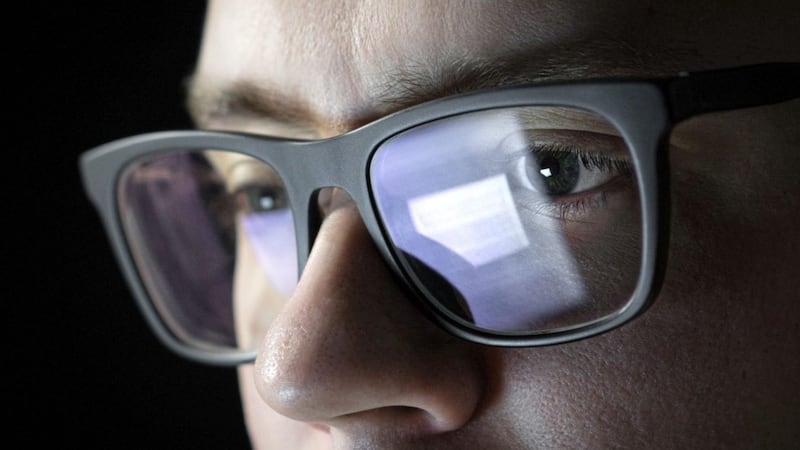FROM loneliness due to reduced social contact to injuries from exercising at home, lockdown has undoubtedly affected our health. And now there’s evidence of another problem it’s causing: weakened eyesight.
Hours staring at a computer screen, little time spent outdoors – and even wearing a mask – are taking their toll on our eyes, experts say.
The concerns follow a recently published poll of 2,012 adults by eye research charity Fight For Sight which showed 38 per cent of people who have used screens more during lockdown believe their sight has worsened – an effect dubbed ‘coronavision’.
Four in 10 of those affected reported difficulty reading and 17 per cent had poorer night vision.
"We are using our eyes differently compared with a year ago; we are spending more hours on computers not just working, but socialising, using them for Zoom chats, for example," says Daniel Hardiman-McCartney, an optometrist and spokesman for the College of Optometrists. "Staring at a screen for hours can affect our eyes so it is not surprising that people are reporting symptoms."
But how could the coronavirus lockdown worsen eyesight?
One theory is that it’s due to our reduced exposure to sunlight. Studies show spending less time outdoors increases the chance of developing short-sightedness, where objects can’t be seen clearly unless they are close to the eyes.
According to research published in the British Journal of Ophthalmology in 2019, there is "solid evidence" that exposure to brighter light as a child reduces the risk of the condition by helping to regulate eye growth.
With short-sightedness – also known as myopia, a permanent condition affecting more than one in three people – the eye grows lengthways, causing distant objects to be blurred.
Staring at screens for prolonged periods may also trigger the condition. This is thought to be caused by not focusing precisely when reading, which leads to periods of blurring that the retina interprets as a sign the eyeball needs to elongate.
A review of 15 studies, published last year in the journal Ophthalmic and Physiological Optics, concluded that while seven studies found a link between screen time and short-sightedness, the overall results were "mixed". But, experts remain concerned short-sightedness rates in adults and children have increased – even in the time since the first lockdown.
"Research has shown that insufficient time spent outdoors is a risk factor for myopia and time viewing electronic devices may pose a risk," says Jeremy Guggenheim, a professor in myopia research at Cardiff University.
"Clinicians around the world are worried lockdown restrictions may elevate levels of myopia."
Another concern is that short-sightedness increases the risk of potentially blinding eye conditions: a detached retina – caused by the retina stretching and being pulled off the eye – is 10 times as likely if you are short-sighted.
Glaucoma (damage to the optic nerve) and cataracts (a clouding of the lens) are also more common in those with myopia.
While the under-20s, whose eyes are still developing, are at greatest risk of myopia, working adults and older people are more likely to experience other eye problems in lockdown, such as difficulty reading, headaches and poor night vision. These may be due to eye strain and dry eyes which are common in these groups, according to James Wolffsohn, a professor of optometry at Aston University.
Eye strain occurs when the eyes become tired through intense use (using them for close-up work for long periods without blinking or taking a break), while dry eyes, which affect one in three people, are when the tear glands don’t produce enough tears or tears evaporate too quickly.
"The surface cells of the eye are quite rough and every time we blink we squeeze liquid on to the surface of the eye to keep it lubricated, and provide nutrition and antibacterial properties to cells,’ explains Prof Wolffsohn.
"Without adequate lubrication from the tear film, the eyes can feel sore and gritty." Dry eyes are common in people over 50, many of whom wear reading glasses to correct presbyopia (the normal loss of near-focusing that occurs with age).
Research suggests it is also becoming more common in children and young adults, associated with digital screen time.
"More time indoors with the central heating on and less blinking because they have been staring at screens will increase the risk of dry eyes developing, and this can temporarily affect vision," says Prof Wolffsohn.
Another factor is mask-associated dry eyes, where breath exhaled is diverted across the surface of the eyes, increasing evaporation, he adds. "This is a problem for all ages and can be combated by wearing a mask that fits well around the nose."
For those concerned about a deterioration in their sight, most opticians are open in lockdown, with extra safety precautions such as a Perspex shield on equipment to separate patient and optician.
Yet one in five people are less likely to get an eye test because of the fear of the virus. The NHS recommends most people get their eyes tested every two years.
Any significant problems or sudden deterioration in sight should be checked by an optician as these are possible signs of serious eye conditions, says Sherine Krause, chief executive of Fight for Sight.
"More than half of all cases of sight loss are avoidable through early detection, and regular eye tests can detect sight-threatening conditions before symptoms occur, such as glaucoma which can lead to blindness."
However, if it is a case of needing stronger reading glasses, this can wait a few months without causing long-lasting damage, according to Prof Wolffsohn.
"The good news is eye strain and dry eyes won’t damage your eyesight in the long term and will not put you at any greater risk of conditions such as glaucoma or cataracts," he says.
There are things you can do to alleviate them including the 20/20/20 rule for eye strain; this recommends that for every 20 minutes spent using a screen, you should look away at something that is 20 feet away from you for a total of 20 seconds to give your eyes a short break from looking at a screen, although there is limited research to support this approach, says Prof Wolffsohn.
For dry eyes, he recommends drops to lubricate, or heated eye masks to melt the oils that may have clogged the tear glands.
Other tips include blinking regularly, positioning your screen between 40 and 75 cm from you, using a text that is easy to see and not using a screen when tired.
© Solo dmg media








